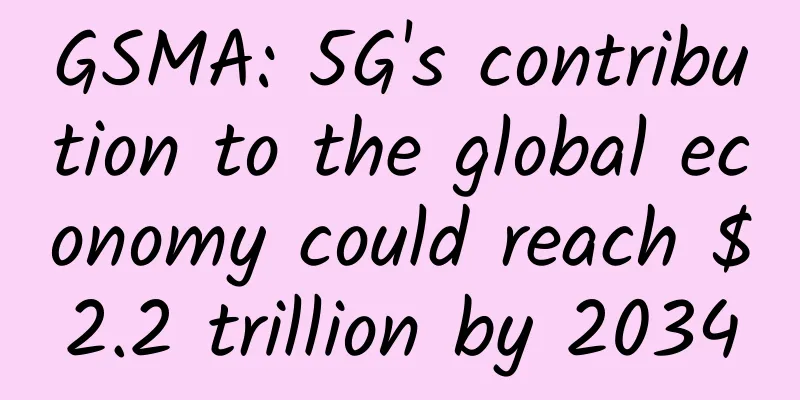Rapid growth in the automobile market: experts warn of the risk of overdraft in demand

|
The automobile market was booming in 2016. Data showed that in the first 11 months of 2016, automobile production and sales reached 25.027 million and 24.948 million respectively, up 14.3% and 14.1% year-on-year respectively. Among them, domestically produced automobiles and new energy vehicles became the highlights. Some experts said that in 2016, the domestic automobile market maintained rapid growth due to factors such as the halving of the purchase tax for 1.6-liter vehicles and the policy of encouraging new energy vehicles. However, at the same time, the problem of insufficient capacity utilization in the domestic automobile industry is still prominent. Some industry insiders predict that the current production capacity of domestic automobile companies has even reached nearly 40 million vehicles, and they must remain vigilant against the crisis of overcapacity. Eye-catching 2016 automobile market develops rapidly According to statistics from the China Association of Automobile Manufacturers, in the first 11 months, Chinese brand passenger cars sold a total of 9.251 million units, a year-on-year increase of 20.2%, accounting for 42.7% of the total passenger car sales, an increase of 1.6 percentage points over the same period last year. New energy vehicles produced 427,000 units and sold 402,000 units, an increase of 59.0% and 60.4% respectively over the same period last year. In the passenger car market, SUV production and sales became the biggest growth point in 2016. In November this year, the production and sales of SUV models in the domestic automobile market were 1.0525 million and 1.0186 million respectively, up 20.97% and 13.69% month-on-month, and up 44.69% and 41.47% year-on-year. In the first 11 months of this year, SUV production and sales increased by 46.3% and 45.5% respectively. This rate is much higher than the average growth rate of the passenger car market. Facing the rising market demand, major automobile companies have spared no effort to launch a variety of SUV models. According to statistics, in the first 10 months of 2016, a total of 170 new or modified SUV models were launched, with a total sales volume of nearly 7 million units. In the new car market in 2016, sedan products have become a "rare item". At the Guangzhou Auto Show in November this year, Mercedes-Benz launched the GLC coupe SUV, GLE coupe SUV, and G350 and G500 hard-core off-road vehicles. At the same time, Mercedes-Benz also launched its first pure electric SUV model EQ, and plans to achieve mass production in a few years. At the same time, domestic brands are also very eye-catching. For example, Beijing Auto has successively launched a series of off-road vehicles such as BJ20, BJ40, BJ40L, BJ80, and SUV models such as Senova X25, X35, X55, and X65. At the same time, Changhe Automobile, a subsidiary of Beijing Auto, has also successively launched many urban SUV models such as Q25 and Q35. Data shows that in November this year, domestic brands occupied 6 seats in the top 10 SUV sales. In the first 11 months of this year, domestic brand SUV sales reached 4.56 million units, accounting for 57.4% of the total SUV sales. Automobile expert Wu Yingqiu said that domestic brand SUV products have made great improvements in terms of technology, quality and configuration, becoming an important factor in promoting the rapid development of the SUV market and the entire automobile market. Correspondingly, in the first 10 months of this year, key enterprises in the automobile industry achieved a total profit of nearly 300 billion yuan, a year-on-year increase of 9.64%, an increase of 1.2 percentage points compared with the first 9 months. Beware of the risk of overdraft in consumer demand Some experts also said that the booming automobile market in 2016 was partly due to the concentrated release of market demand under policy stimulus. According to reports, before September 2015, the Chinese auto market had been in a state of continuous decline. In order to reverse this situation and enhance market confidence, the government introduced a policy of halving the purchase tax for passenger cars with a displacement of 1.6 liters or less. Under the guidance of the policy, the Chinese auto market began a round of "V"-shaped reversal, with production and sales in the first eight months of 2016 both increasing by more than 10%. Sun Yong, an automotive industry expert, said that this year, under policy stimulus, some small and medium-displacement car markets have achieved high growth. The base is already relatively high, and it would be difficult to maintain high growth in 2017. Recently, the decision on whether the purchase tax preferential policy for small-displacement cars will be continued has been officially made. The Ministry of Industry and Information Technology has made it clear that in 2017, the purchase tax preferential policy for passenger cars with a displacement of 1.6 liters and below will continue, but the discount amount will be reduced from 50% to 25%. In this regard, some industry insiders said that the continuation of the purchase tax preferential policy will play a certain role in promoting the auto market in 2017, but due to the situation of early overdraft in market consumption and the reduction in the preferential amount, it is expected that the promotion of this policy on the auto market in 2017 will be weaker than in 2016. Automobile expert Yan Jinghui said that the stimulus policy will be withdrawn in a declining manner, which will avoid major fluctuations in the auto market next year and ensure moderate and stable growth in the auto market. Cui Dongshu, secretary-general of the National Passenger Car Conference, also said that the purchase tax preferential policy of levying a rate of 7.5% is in line with consumer expectations, which can not only minimize tax losses but also stabilize the growth rate of automobile production and sales next year. However, some experts have warned that in the face of the booming market in 2016, many companies have begun planning large-scale capacity expansion, which involves market risks. They hope that automobile manufacturers can remain calm and pay attention to new changes in the market. Prevention and control of signs of excess automobile production capacity The National Development and Reform Commission recently stated that it will continue to promote the "three cuts, one reduction and one supplement" in 2017. In addition to the steel and coal industries, other overcapacity industries will also be included in the ranks of capacity reduction. In this regard, some experts said that China's automobile industry already has more than 6 million vehicles of capacity under construction, and the signs of overcapacity have already appeared. The automobile industry may be included in the ranks of capacity reduction in 2017. In fact, the auto industry has already started to reduce overcapacity. In October this year, the State Council's executive meeting proposed for the first time that, in principle, no new traditional fuel vehicle manufacturers would be approved. Cui Dongshu said that this has promoted the transformation and upgrading of the auto industry, encouraged investment enthusiasm in new energy vehicles, and also regulated traditional auto manufacturers to prevent overcapacity. In actual operation, the pace of de-capacity in the automobile industry has also begun. In the first half of this year, 13 automobile companies including Shuanghuan and Qingling had their passenger car production qualifications revoked by the Ministry of Industry and Information Technology. This shows that the pace of de-capacity in the automobile industry is accelerating, and some companies that are poorly managed and cannot meet market demand are accelerating their delisting. And urging the withdrawal of backward production capacity and realizing resource integration and upgrading will also become a normal practice in the automobile industry. According to statistics from the China Association of Automobile Manufacturers, as of 2015, China's passenger car production capacity was nearly 26 million vehicles, and commercial vehicle production capacity was nearly 5.5 million vehicles. Among them, the passenger car capacity utilization rate was 81%, and the commercial vehicle capacity utilization rate was 52%, which was not ideal. At the same time, as of the end of 2015, there were 184 automobile manufacturers with independent production qualifications in the country, with one company producing and selling more than 2 million vehicles, six companies with production and sales of 1 million to 2 million vehicles, and 31 companies with less than 10,000 vehicles. Among them, the top five companies produced and sold a total of 17.8453 million vehicles in 2015, accounting for 72.55% of the total automobile production and sales, and the remaining more than 100 automobile companies accounted for only 27.45% of the total production and sales market. Some experts said that in 2016, the domestic automobile market maintained double-digit growth due to favorable factors such as the halving of the purchase tax for 1.6-liter vehicles and the stimulation of demand by policies related to new energy vehicles, the further release of growth potential in regional markets, and the continuation of the growth trend of SUVs. However, at the same time, we must also see the reality of insufficient utilization of production capacity in the domestic automobile industry. Some industry insiders estimate that the current production capacity of domestic automobile companies has even reached nearly 40 million vehicles, and we must remain vigilant against the crisis of overcapacity. In the face of overcapacity, not only the traditional automobile sector remains highly vigilant, but also strict control has begun in the field of new energy vehicles. Recently, Wanxiang Group's annual production of 50,000 extended-range pure electric passenger vehicles was officially approved. So far, Wanxiang Group has become the sixth company to obtain the qualification to produce pure electric vehicles after BAIC New Energy, Changjiang Automobile, Qiantu Automobile, Chery New Energy, and Minan Automobile. It is understood that there are currently more than 200 companies applying for the qualification to produce new energy vehicles. Such strict control of the entry threshold of new energy vehicles is also a consideration to prevent overcapacity. As a winner of Toutiao's Qingyun Plan and Baijiahao's Bai+ Plan, the 2019 Baidu Digital Author of the Year, the Baijiahao's Most Popular Author in the Technology Field, the 2019 Sogou Technology and Culture Author, and the 2021 Baijiahao Quarterly Influential Creator, he has won many awards, including the 2013 Sohu Best Industry Media Person, the 2015 China New Media Entrepreneurship Competition Beijing Third Place, the 2015 Guangmang Experience Award, the 2015 China New Media Entrepreneurship Competition Finals Third Place, and the 2018 Baidu Dynamic Annual Powerful Celebrity. |
<<: US version of Mondeo under investigation by safety regulator
Recommend
McDonald’s community operation strategy!
More and more companies are starting to develop t...
Design of self-propagation activities for inviting new users to share based on the perspective of funnel model
Students who work in operations all know the AARR...
What are the "Fermi Paradox" and the Great Filter Hypothesis? Does the cosmic civilization filter really exist?
After the "Fermi Paradox" about aliens ...
From wild growth to intensive cultivation? Chinese white goods companies collectively focus on the high-end market
Data from Aowei Cloud Network shows that in 2016,...
How to use data to drive operational growth
Maybe we won’t get a satisfactory result immediat...
Fixed traffic scale, using ecpm formula to improve advertising monetization capabilities
According to the concept of eCPPM, given a fixed ...
Basic data that operators must know: Data analysis on "new users"
As an operator , it is essential to deal with dat...
The new Liberty X will be released this year.
Jeep has always specialized in hard-core off-road...
Can lying down with eyes closed when you can’t sleep reduce the damage caused by insomnia?
This article was reviewed by Zhao Wei, MD, associ...
Full experience of APP promotion channels, conversion rate is the first
The rise of mobile Internet is inseparable from t...
Talk about the routines in data mining competitions and the limitations of deep learning
Preface Just during the summer vacation, I partic...
There are more than 650 fires caused by electric welding and cutting in winter! These safety measures should be taken well
Did you know that electric welding and cutting po...
How to plan an excellent event? Follow these 5 steps
Whether you are doing user operations, new media ...
Analysis of Taobao and Douyin’s live e-commerce competitors
This article focuses on Douyin e-commerce, analyz...









